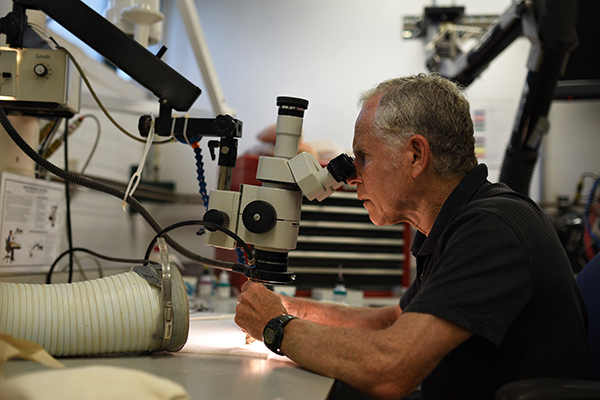A UT researcher has discovered animals, including elephants, camels and rhinos, once roamed through Texas about 12 million years ago.
Steven May, a researcher at the Jackson School of Geoscience, identified the animals in a fossil collection from Beeville, Texas. May said identifying the animals helps us understand Texas’s past environment and how it has changed over time.
The fossils represented a fauna, or a group of animals that lived at a specific time, May said. The majority of them were collected between 1939 and 1941 and are now housed in the Vertebrate Paleontology Center at the Pickle Research Campus, May said.
Animals were identified from the fossil collections by looking at the teeth of the specimens and comparing the specimen to findings from other research publications, said Deborah Wagner, the paleontology laboratory manager.
“Teeth are useful to find because they will remain in good condition, and they are very distinct between animals,” Wagner said.
Animals were also identified by comparing fossil fragments in the collection to other specimens in the Vertebrate Paleontology Laboratory, said Matthew Brown, a director of museum operations at the Vertebrate Paleontology Laboratory.
“For example, if we had an unidentified fragment of a jaw, we could compare it to a more complete jaw specimen that has already been labeled,” Brown said. “You can then see which animal the fragment fits with.”
From these techniques, May was able to identify 50 different animals, making up a diverse fauna, he said.
“Species included elephant-like animals, camel and antelope-type animals, horses and a rhino,” May said. “I also identified an alligator from that time, which is very similar to alligators of today.”
Carnivores were rare in the group, and this is a characteristic of fauna today as well, May said.
“I was interested in looking at the collection to learn about which animals lived in Texas 11 to 12 million years ago,” May said. “From there, you can reconstruct a picture of what the environment looked like at that time.”
The animal identifications can give many evolutionary insights about Texas, May said.
“We get a picture that these animals lived in a grassland, woodland, savanna type environment with many rivers in it,” May said. “If you compare that environment to fauna and environments of different ages, such as today’s age, you can learn how wildlife and the environment of Texas has changed over time.”





















